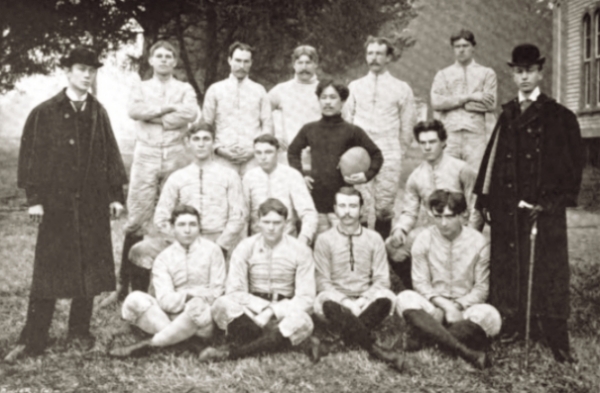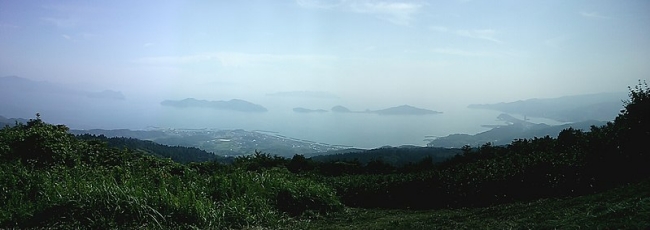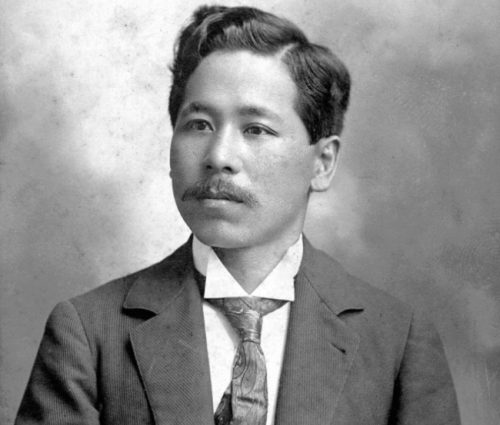Kin Takahashi was a five-feet-two-inch, 123-pound ball of joyous energy whose fire burned brightly for only thirty-six short years. But Mr. Takahashi shared his energy with all those around him willingly and without hesitation. It could be said that his life was so brief because he gave everything of himself, serving his fellow human beings in the Christian mission.
Kin Takahashi is most known for two things: bringing football to East Tennessee and building Bartlett Hall, the first on-campus YMCA in the country.1)The first student YMCA was also established in Tennessee in 1856 at Cumberland College in Lebanon, TN. These two accomplishments are certainly noteworthy, and the raising of Bartlett Hall is a feat that deserves to be told time and again. But these contributions are just two of the most obvious and are arguably the easiest to put into a headline. His life’s work tells the story of a man who was truly called to serve, and who wholly answered that call.
Kin Takahashi was born in Hirao, Yamaguchi Prefecture, Japan, a mountainous region near the southern coast of the island of Honshu.2)His exact birth year is uncertain. Upon his death in November 1902, he was listed as thirty-six years old, which puts his birth year at 1866. (Blair, Carolyn L. and Walker, Arda S. By Faith Endowed: The Story of Maryville College. Maryville College Press, 1994. p 93) Maryville College president Dr. Samuel T. Wilson, in his book, A Century of Maryville College: 1819 – 1919, A Story of Altruism, says he was a seventeen-year-old boy when he came to the college in 1888. (Wilson, Samuel T. A Century of Maryville College: 1819 – 1919, A Story of Altruism. Published by The Directors of Maryville College, Maryville, TN 1916. p 154.) Wilson knew Takahashi personally. However, given his small size and youthful exuberance, it’s understandable that his age could be mistaken. Greg Robinson, a Professor of History at l’Université du Québec À Montréal, provides strong evidence that Takahashi was older when he came to the US in his article “Kin was Much More than Kind: The Japanese Student Who Transformed Maryville.” (Robinson, Greg. “Kin was Much More than Kind: The Japanese Student Who Transformed Maryville” in Discover Nikkei* *Japanese Migrants and their Descendants. Published Nov. 30, 2020.) He came to America for an education, arriving in California in 1886, where he spent two years at Hopkins Academy in Oakland. He studied English, converted to Christianity, and was involved in the Japanese Young Men’s Christian Association.3)Robinson, “Kin was Much More than Kind.”
Takahashi’s parents were Buddhist and Shinto and, when he wrote to them about his faith conversion, they cut off his financial support.4)Wilson, A Century of Maryville College, 154. Being an active and energetic young man with a strong belief in his new-found faith, he was undaunted and took this challenge in stride. In 1888, he followed Sen Katayama, a friend and classmate at Hopkins, to Maryville College, a school with a reputation for helping poor students get an education.5)Sen Katayama’s life was one of storied international work and influence, though he was only at Maryville College for a short time. Perhaps this will be a subject of a future post. Takahashi’s cheerful, dynamic nature and natural leadership carried him to success throughout his life in any endeavor. Dr. Samuel T. Wilson was a Professor at Maryville and knew Takahashi as a student there. In his book A Century of Maryville College, Wilson wrote of Takahashi:
“He possessed a truly marvelous natural endowment of initiative, adaptation, and energy. For example, he turned his talents to many varieties of work, from cooking to lecturing, in earning his own expenses. It was not long until he had won for himself the unquestioned position of student leader in the College . . . He was a born organizer in religious activities as elsewhere.”6)Wilson, A Century of Maryville College, 154 – 155.
Takahashi’s spirited leadership was seen in every facet of life all across campus. He organized Maryville’s first field days event in 1892,7)Blair and Walker, By Faith Endowed: The Story of Maryville College. 89 an outdoor social event for students and faculty. He was actively involved in the “February Meetings,” an annual event begun at Maryville in 1877 that continues today. Now called “Cummings Conversations,” these organized speaking and discussion events bring the college and local community together “to consider questions of faith and living in a complex world.”8)Maryville College website Takahashi created and published “College Days,” the first campus student newspaper. This work was a natural extension of his news gathering for local papers. He organized a delegation of 156 people from MC to attend the Cotton States Exposition in Atlanta in 1895.9)This Exposition was, essentially, a small southern worlds fair. Blair and Walker, By Faith Endowed: The Story of Maryville College. 90.
To say Takahashi “introduced football” is a bit of an oversimplification. In 1889, after only one year in the area, he organized a school team for which he was captain and quarterback. He designed the plays, coached the team, and organized the matches. Dr. Wilson describes the planning sessions:
“He marshalled [sic] his team in his room and worked out before them the theory of his plays, illustrating them by moving grains of corn on the diagram of a gridiron outlined on his table.”10)Wilson, A Century of Maryville College, 155.

Small and agile, he was dubbed “Kentucky Hossie” by his fellow students. Alum and author Joseph Cochran, wrote just twenty-five years later:
“How the undersized Japanese taught those surprising and elusive tricks merely by the aid of a football manual and his personal practice plays with corn grains is still told with pride by the loyal sons of Maryville. His lightinglike [sic] dashes around the ends, puzzling the opposing team with his catlike agility, are part of the athletic annals of Tennessee.”11)Cochran, Joseph W. Heroes of the Campus. The Westminster Press, Philadelphia, PA 1917. p 29
Something else Kin Takahashi introduced to Maryville College is, in my humble opinion, far more impactful than the legacy of football. He was an impoverished student who dealt with the constant struggle to support himself and his education, and was acutely aware of classmates living in similar circumstances. He was provided a plot of land on campus for a garden so he and other needful students could work and “grow vegetables for the College Boarding Club, thus reducing their own board bills.” 12)Blair and Walker, By Faith Endowed: The Story of Maryville College. 89 This practice continues today as “work study scholarships,” of which I was a very happy beneficiary during my time. (In fact, I worked in the grounds department. I met a number of wonderful folks I would never otherwise have known, bled my first set of breaks, and shoveled my first truckload of mushroom compost. Thank you Mr. Takahashi!)
Like Takahashi’s other accomplishments, his building of Bartlett Hall involved far more drive and energy than a simple description conveys. Creating the YMCA and gymnasium for the college and community was his way of thanking a campus that had done so much for him. Dr. Wilson quotes him: “The College has done so much for me, and the Christian Church in America has done so much for my country, that I, as a Japanese, want to do something to show my gratitude.”13)Wilson, A Century of Maryville College, 156 Kin Takahashi never did anything halfway. He began the building campaign in March of 1894, a year before his graduation.
By his graduation in the spring of 1895, Takahashi had gathered broad support from the campus and secured enough funds to begin the work. Through his industrious leadership, he organized students to build brick ovens and, consequently, they made the bricks for the building themselves. Local farmers donated the wood to fire the ovens and the students (both male and female) made 300,000 bricks. With his work-study plan, students made 7 ½ cents an hour working in the brick mill.14)Blair and Walker, By Faith Endowed: The Story of Maryville College. 91 His grand plan had begun, but much more money was needed if Takahashi was to see it completed.
Lectures and speaking engagements were central to Takahashi’s work. He organized many of these speaking events to raise money for the building campaign. He also recruited the support of newspapers across the state, connections he gained through his work as a reporter. In late 1895 and 1896, he made two trips through the Northeast seeking donors to secure the funds needed to complete the YMCA. Fundraising was not something Takahashi liked, as he once wrote, “I would rather take a whipping than solicit money, but someone must do it.”15)Blair and Walker, By Faith Endowed: The Story of Maryville College. 91 He set the cornerstone in the summer of 1896 with the inscription “Christ is our Cornerstone.”
Two years after his graduation in fall 1897, Takahashi had secured enough funds for the building’s completion and could now return to Japan to begin his calling there. Maryville had a farewell party for him before he embarked on his journey. He raised the funds for his trip home by giving lectures along the way. News of his departure was reported in the Chattanooga Daily Times:
“Kin Takahashi, graduate of Maryville College, bids adieu to his alma mater [and is] en route to Washington, where he will deliver a lecture on his native country. He will also go to other eastern and northern cities delivering this lecture wherever possible. By this means he hopes to raise a sufficient fund to pay is transportation to Japan.”
In November 1897 the Wilkes-Barre Times Leader (Pennsylvania) reported his visit, listing five lectures in just a few days in the area. He arrived in Japan in early 1898.
Upon his return to Japan, he once again took up social missionary work, eventually becoming the General Secretary of the Tokyo YMCA.16)Robinson, Greg. “Kin was Much More than Kind: The Japanese Student Who Transformed Maryville” in Discover Nikkei* *Japanese Migrants and their Descendants. Published Nov. 30, 2020. Serious lingering health issues led to his retiring to his familial home of Hirao, an area with a less strenuous workload. His drive to serve those around him didn’t stop, though, and, in his convalescence, he taught four students in his home. The class quickly expanded and he soon “organized a literary society, and taught them how to speak and debate after the dear old Maryville style.”17)From a letter written by Kin Takahashi to a friend quoted in Dr. Wilson’s A Century of Maryville College, 157 The endeavor developed into a more proper school with nine teachers and “opened it’s second year with one hundred and sixteen pupils, representing all parts of the province.”18)Wilson’s A Century of Maryville College, 158 While working on plans for a new school building, Kin Takahashi succumbed to his illness and passed away on the morning of May 7, 1902.19)Cochran, Joseph W. Heroes of the Campus. The Westminster Press, Philadelphia, PA 1917. 35
Both Dr. Wilson and Joseph Cochran describe the scene of Kin Takahashi’s funeral. There were multitudes of people who attended, even though Hirao was a small, rural mountain town.20)Wilson’s A Century of Maryville College, 158 Cochran provides a description of the funeral taken from a letter by Rev. F. S. Curtis, a missionary and friend to Kin who conducted his funeral:
“The house and grounds were crowded to overflowing. I suppose two hundred and fifty or three hundred persons were present, including the leading citizens of the town, who had been impressed by the earnest life of this young Christian. The streets were literally lined with hundreds, and when we reached the hillside where his body was to be interred, we found nearly a thousand people gathered.”21)Cochran, Joseph W. Heroes of the Campus. The Westminster Press, Philadelphia, PA 1917. 36. I couldn’t find any more information on Rev. Curtis, so I don’t know any more about how well he knew Takahashi or what connection, if any, he may have had with Maryville College.

Kin Takahashi’s life and work continue to be memorialized at Maryville College through a tradition of service. Alumni have been returning to campus to perform service since the forties, and in 1997 the MC Alumni Association established the annual event “KT Days.” Last year, in response to the challenges of the global pandemic, the event became KT Global. Alumni, parents, students, and supporters organized service projects in the United States and Japan. According to the KT Global 2021 Wrap Up on Maryville College’s website “There were 38 projects in two countries, 12 states, and 25 towns/cities across the globe, and volunteers served 1,050 hours collectively.” Maryville College’s Center for Global Engagement attracts students from all over the world and helps to build intercultural understanding. Bartlett Hall is newly renovated and serves as the Student Union, where students can gather, socialize, and debate in that dear old Maryville style.
References
| ↑1 | The first student YMCA was also established in Tennessee in 1856 at Cumberland College in Lebanon, TN. |
|---|---|
| ↑2 | His exact birth year is uncertain. Upon his death in November 1902, he was listed as thirty-six years old, which puts his birth year at 1866. (Blair, Carolyn L. and Walker, Arda S. By Faith Endowed: The Story of Maryville College. Maryville College Press, 1994. p 93) Maryville College president Dr. Samuel T. Wilson, in his book, A Century of Maryville College: 1819 – 1919, A Story of Altruism, says he was a seventeen-year-old boy when he came to the college in 1888. (Wilson, Samuel T. A Century of Maryville College: 1819 – 1919, A Story of Altruism. Published by The Directors of Maryville College, Maryville, TN 1916. p 154.) Wilson knew Takahashi personally. However, given his small size and youthful exuberance, it’s understandable that his age could be mistaken. Greg Robinson, a Professor of History at l’Université du Québec À Montréal, provides strong evidence that Takahashi was older when he came to the US in his article “Kin was Much More than Kind: The Japanese Student Who Transformed Maryville.” (Robinson, Greg. “Kin was Much More than Kind: The Japanese Student Who Transformed Maryville” in Discover Nikkei* *Japanese Migrants and their Descendants. Published Nov. 30, 2020.) |
| ↑3 | Robinson, “Kin was Much More than Kind.” |
| ↑4 | Wilson, A Century of Maryville College, 154. |
| ↑5 | Sen Katayama’s life was one of storied international work and influence, though he was only at Maryville College for a short time. Perhaps this will be a subject of a future post. |
| ↑6 | Wilson, A Century of Maryville College, 154 – 155. |
| ↑7, ↑12 | Blair and Walker, By Faith Endowed: The Story of Maryville College. 89 |
| ↑8 | Maryville College website |
| ↑9 | This Exposition was, essentially, a small southern worlds fair. Blair and Walker, By Faith Endowed: The Story of Maryville College. 90. |
| ↑10 | Wilson, A Century of Maryville College, 155. |
| ↑11 | Cochran, Joseph W. Heroes of the Campus. The Westminster Press, Philadelphia, PA 1917. p 29 |
| ↑13 | Wilson, A Century of Maryville College, 156 |
| ↑14, ↑15 | Blair and Walker, By Faith Endowed: The Story of Maryville College. 91 |
| ↑16 | Robinson, Greg. “Kin was Much More than Kind: The Japanese Student Who Transformed Maryville” in Discover Nikkei* *Japanese Migrants and their Descendants. Published Nov. 30, 2020. |
| ↑17 | From a letter written by Kin Takahashi to a friend quoted in Dr. Wilson’s A Century of Maryville College, 157 |
| ↑18, ↑20 | Wilson’s A Century of Maryville College, 158 |
| ↑19 | Cochran, Joseph W. Heroes of the Campus. The Westminster Press, Philadelphia, PA 1917. 35 |
| ↑21 | Cochran, Joseph W. Heroes of the Campus. The Westminster Press, Philadelphia, PA 1917. 36. I couldn’t find any more information on Rev. Curtis, so I don’t know any more about how well he knew Takahashi or what connection, if any, he may have had with Maryville College. |





